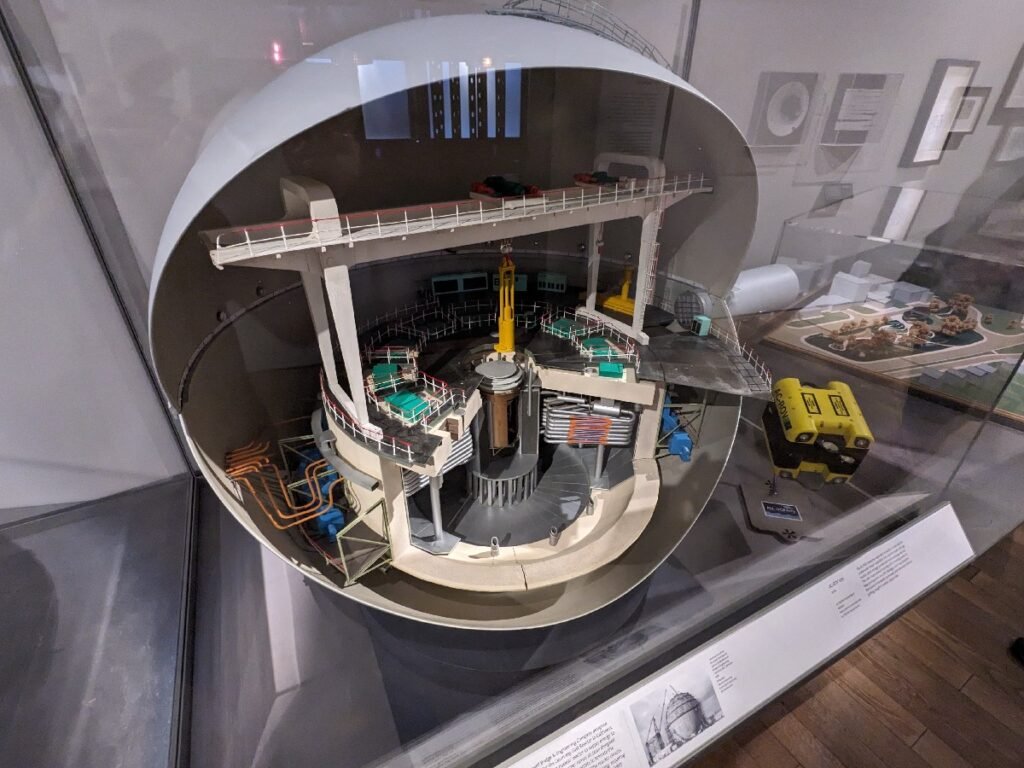14th November 1959
Dounreay fast breeder reactor goes online
Being both small and a fair distance from major population centres, Dounreay has long played an important role in both nuclear power generation, and nuclear research in Britain.
In the 1950s, the United Kingdom Atomic Energy Authority initially built one test reactor at Dounreay, which was later joined by two fast breeder reactors. Fast Breeder Reactors create more fuel than they consume.

Reactor goes critical
The first of the fast breeder reactors went online in May 1958, with the Belfast Telegraph on 24 May describing how, “the Atomic Energy Authority said that in the early hours, Dr Robert Hurst, director of the Dounreay research establishment guided into position a rod containing enriched uranium fuel, which made the reactor go ‘critical’.”
However, it wasn’t until 14 November 1959 that the reactor went live. The Aberdeen Evening Express that day ran a story on its front page about the reactor going ‘critical’ at the start of several months of low power generation. “This may be followed by a shut down for any modifications found necessary and the reactor will then be worked up to power in stages,” it explained. Quoting from a release, the paper described the reactor, which
“consists of a central core which is a hexagonal prism approximately twenty-one inches high and twenty-one inches across the flats. This is made up of about 360 enriched uranium rods in niobium cans, and is surrounded by a further 2000 rods of natural uranium called the ‘blanket’. The nuclear reaction in the core produces neutrons and heat. A proportion of the neutrons make their way into the blanket where they produce plotonium [sic]. Plotonium is a nuclear fuel and can be used in the core to produce more heat and more plutonium. Experiments have shown that the amount of fissile material produced in the core and the blanket during operation will exceed the amount burned up in the core, and the reactor is thus a breeder.”
Reactor decommissioned
Although it was decommissioned in the late 1970s, much of the infrastructure of the first fast breeder reactor remained on site for some time, including the distinctive white sphere that enclosed the reactor core. A third prototype reactor opened in 1974 and remained in operation for 20 years. The neighbouring site, HMS Vulcan, was also used for nuclear research in the development of high-pressure reactors for use in submarines. It, too, has been decommissioned.
Like many such plants, Dounreay was the site of some accidents during its lifetime. For more than two decades, between 1964 and 1984, radioactive fuel fragments the size of a grain of sand escaped from the plant and contaminated the surrounding sea and beaches. With some of the contaminants having a half-life of close to 25,000 years, they could prove lethal if ingested.
In 1998, the site was in the headlines when a digger managed to cut through a power supply, forcing a shut down on safety grounds. The Daily Mirror of 13 May reported that it “was shut down last night, a week after a power failure triggered a safety alert. The Health and Safety Executive said it would be closed for at least four weeks until it could prove it would operate safely again.”
Other events that occured in November
FREE Scotland history newsletter
Don't miss our weekly update on Scotland's fascinating history. We promise never to sell your data to anyone else, and there's a super-easy unsubscribe link on the bottom of each email so you can leave whenever you want.
